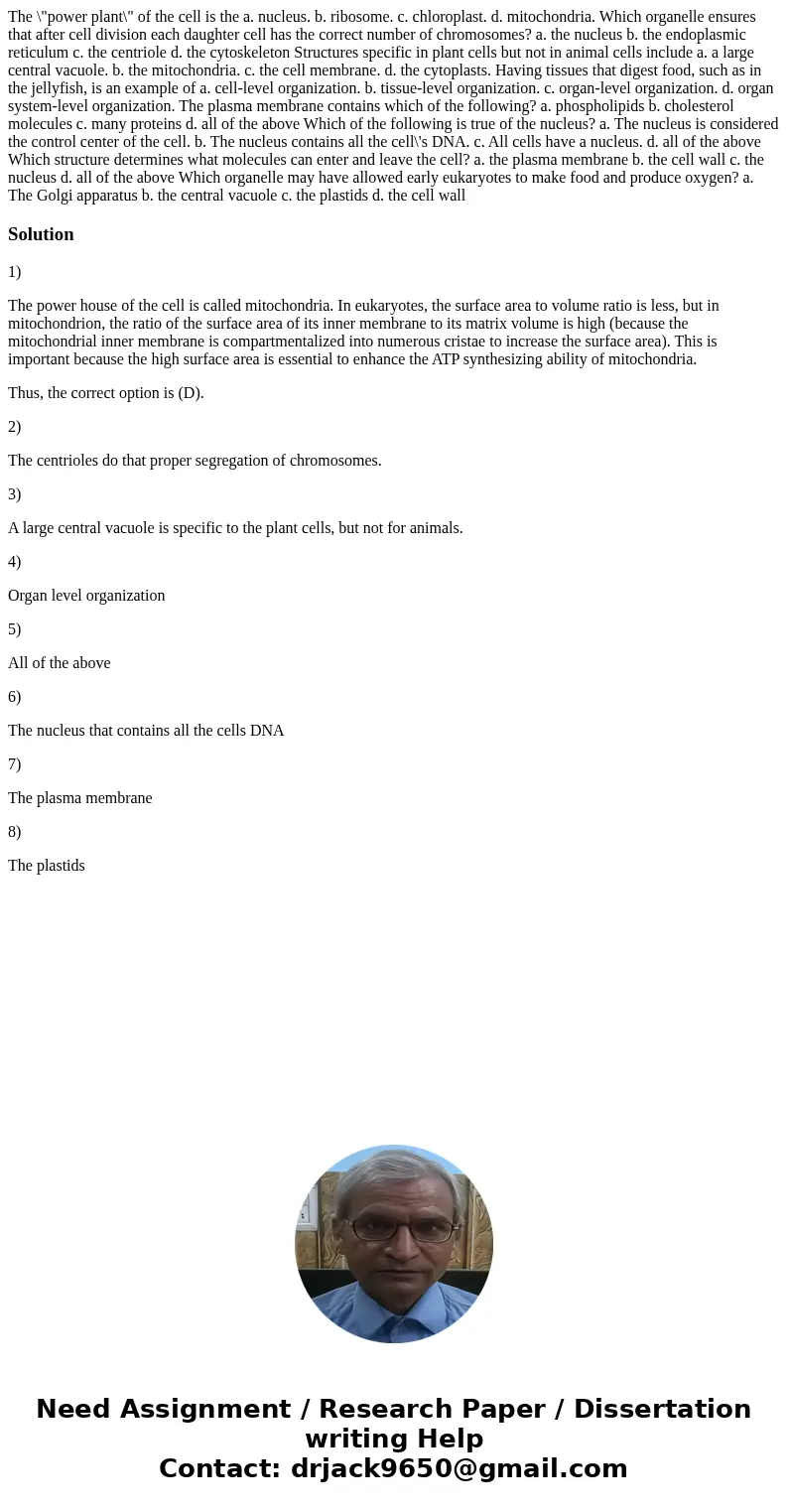The power plant of the cell is the a nucleus b ribosome c ch
The \"power plant\" of the cell is the a. nucleus. b. ribosome. c. chloroplast. d. mitochondria. Which organelle ensures that after cell division each daughter cell has the correct number of chromosomes? a. the nucleus b. the endoplasmic reticulum c. the centriole d. the cytoskeleton Structures specific in plant cells but not in animal cells include a. a large central vacuole. b. the mitochondria. c. the cell membrane. d. the cytoplasts. Having tissues that digest food, such as in the jellyfish, is an example of a. cell-level organization. b. tissue-level organization. c. organ-level organization. d. organ system-level organization. The plasma membrane contains which of the following? a. phospholipids b. cholesterol molecules c. many proteins d. all of the above Which of the following is true of the nucleus? a. The nucleus is considered the control center of the cell. b. The nucleus contains all the cell\'s DNA. c. All cells have a nucleus. d. all of the above Which structure determines what molecules can enter and leave the cell? a. the plasma membrane b. the cell wall c. the nucleus d. all of the above Which organelle may have allowed early eukaryotes to make food and produce oxygen? a. The Golgi apparatus b. the central vacuole c. the plastids d. the cell wall
Solution
1)
The power house of the cell is called mitochondria. In eukaryotes, the surface area to volume ratio is less, but in mitochondrion, the ratio of the surface area of its inner membrane to its matrix volume is high (because the mitochondrial inner membrane is compartmentalized into numerous cristae to increase the surface area). This is important because the high surface area is essential to enhance the ATP synthesizing ability of mitochondria.
Thus, the correct option is (D).
2)
The centrioles do that proper segregation of chromosomes.
3)
A large central vacuole is specific to the plant cells, but not for animals.
4)
Organ level organization
5)
All of the above
6)
The nucleus that contains all the cells DNA
7)
The plasma membrane
8)
The plastids

 Homework Sourse
Homework Sourse